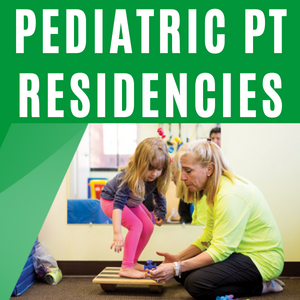Back
Platform presentation
Measuring Physiological Responses Using Heart Rate Variability Across Sensory Systems in Children with Medical Complexity
Saturday, November 19, 2022
12:09 PM – 12:26 PM
Location: Grand Ballroom 1
- CD
Cynthia B. Dodds, PT, PhD, PCS (she/her/hers)
Associate Professor
Medical University of South Carolina
Charleston, South Carolina - BM
Brooke C. Mulrenin, OTR, PhD
Medical University of South Carolina
Durham, North Carolina
Platform Presenter(s)
Presenter(s)
Purpose/Hypothesis: Heart rate variability (HRV) is a physiologic marker of autonomic nervous system (ANS) health. Children with medical complexity (CMC) display ANS impairment and subsequently reduced heart rate variability (HRV), which indicates a state of chronic sympathetic dominance (fight or flight) and physiological stress. It is also recognized that because of multiple body system impairments in CMC, assessing sensory motor responses is challenging; however, the measurement of HRV may provide insight. In order for HRV can be considered a potential physiological measure in CMC, preliminary descriptive values are needed. The purpose of this presentation is to report descriptive heart rate variability values for CMC at baseline and across five sensory domains (i.e., olfactory, visual, auditory, gustatory, tactile).
Number of Subjects: Thirty-three CMC between the ages of 3-21 years were assessed within school-based settings. All children demonstrated severe brain impairments, functional limitations, high healthcare needs and utilization, and participatory restrictions in life. A subset of 19 children with cerebral palsy (GMFCS level IV and V) were identified within the study sample.
Materials/Methods: Heart rate variability was collected prior to and during administration of the newly developed Pediatric Assessment of Sensory Motor Awareness. Each child was assessed by the same assessor for five days within a 10-day period. Using FirstBeat Bodyguard 2 monitors, respiratory sinus arrhythmia (RSA) values were derived from HRV files using CardioBatch software. Descriptive and repeated measures statistics were used to analyze data.
Results: Participant demographics and RSA values for baseline and across five sensory domains will be reported. Significant differences in RSA between sensory domains will be discussed. Comparisons between this study’s larger CMC sample and its subset of children with cerebral palsy will be reported.
Conclusions: Study findings provide documentation of preliminary physiological responses in CMC including a subset of children with cerebral palsy. The measurement of HRV may provide a method to target and evaluate clinical decision making and interventions in CMC more accurately. Replication of these study findings will be necessary.
Clinical Relevance: Findings from this study suggest that: 1) HRV is a simple and valid method by which to assess physiological stress in CMC and 2) certain sensory stimulation may reduce or intensify physiologic stress in CMC. Collectively, this information integrated into a physical therapy assessment and/or treatment may improve the ability to understand physiological stress in CMC and modify sensory stimulation to reduce chronic sympathetic dominance, enhancing patient outcomes and quality of life.
Number of Subjects: Thirty-three CMC between the ages of 3-21 years were assessed within school-based settings. All children demonstrated severe brain impairments, functional limitations, high healthcare needs and utilization, and participatory restrictions in life. A subset of 19 children with cerebral palsy (GMFCS level IV and V) were identified within the study sample.
Materials/Methods: Heart rate variability was collected prior to and during administration of the newly developed Pediatric Assessment of Sensory Motor Awareness. Each child was assessed by the same assessor for five days within a 10-day period. Using FirstBeat Bodyguard 2 monitors, respiratory sinus arrhythmia (RSA) values were derived from HRV files using CardioBatch software. Descriptive and repeated measures statistics were used to analyze data.
Results: Participant demographics and RSA values for baseline and across five sensory domains will be reported. Significant differences in RSA between sensory domains will be discussed. Comparisons between this study’s larger CMC sample and its subset of children with cerebral palsy will be reported.
Conclusions: Study findings provide documentation of preliminary physiological responses in CMC including a subset of children with cerebral palsy. The measurement of HRV may provide a method to target and evaluate clinical decision making and interventions in CMC more accurately. Replication of these study findings will be necessary.
Clinical Relevance: Findings from this study suggest that: 1) HRV is a simple and valid method by which to assess physiological stress in CMC and 2) certain sensory stimulation may reduce or intensify physiologic stress in CMC. Collectively, this information integrated into a physical therapy assessment and/or treatment may improve the ability to understand physiological stress in CMC and modify sensory stimulation to reduce chronic sympathetic dominance, enhancing patient outcomes and quality of life.

.png)
.png)
.jpg)
.png)
.png)
.png)
